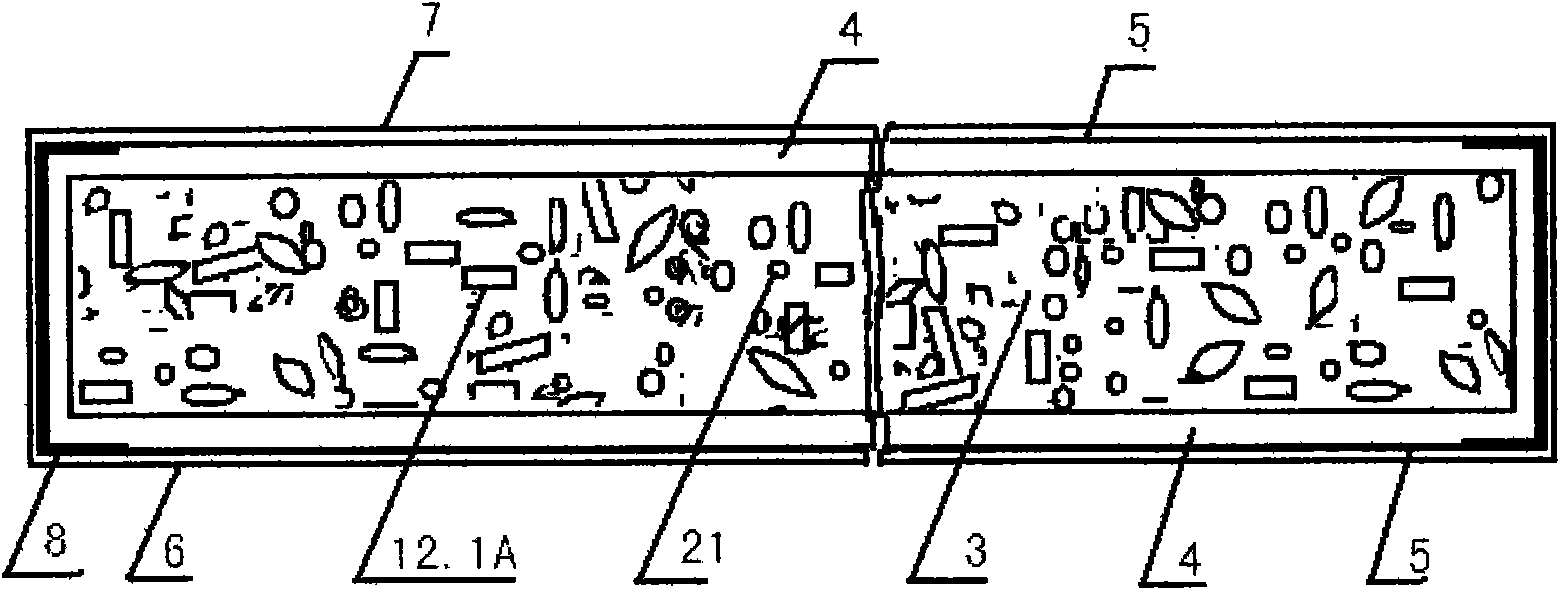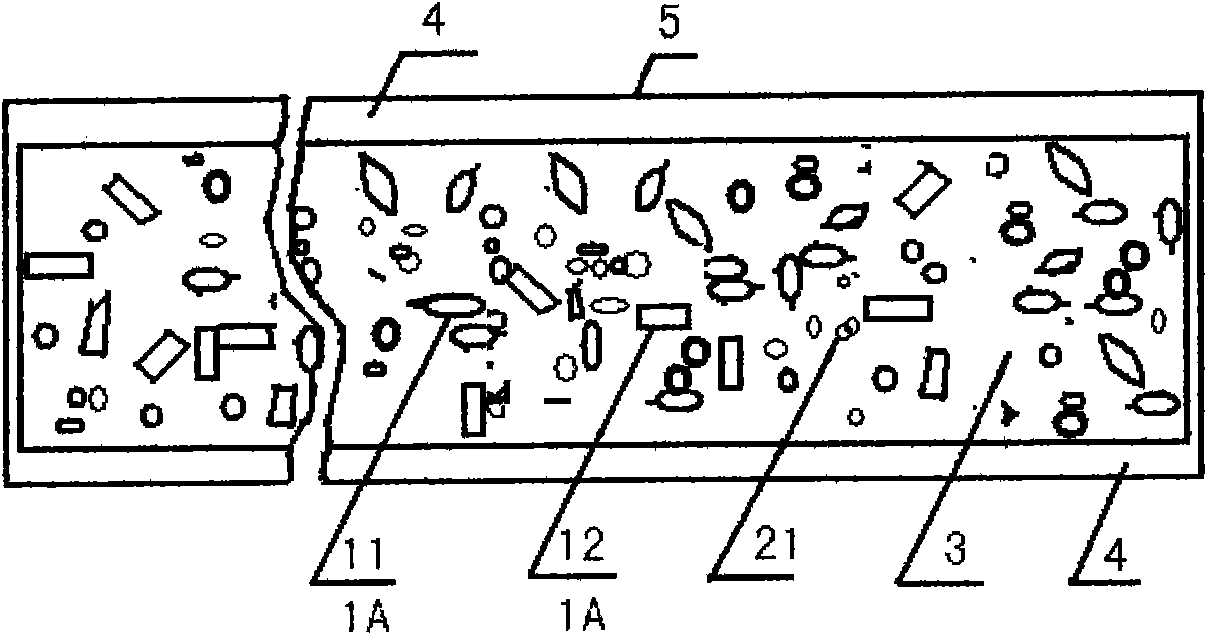Environment-friendly light heat-insulating material and manufacturing method thereof
A light-weight heat-insulating and lightweight aggregate technology is applied in the field of heat-insulating and fire-proof materials, which can solve the problems of insufficient toughness, easy slag drop, and reduce board density, achieve good toughening effect and buffer performance, and reduce environmental pollution. , good fire protection effect
- Summary
- Abstract
- Description
- Claims
- Application Information
AI Technical Summary
Problems solved by technology
Method used
Image
Examples
Embodiment 1
[0060] Prepare water glass adhesive and thermal insulation layer adhesive earlier. Add 100 parts by weight of sodium water glass with 1% sodium tripolyphosphate into the container, add 8 parts of silica powder, add 4 parts of aluminum silicate slag cotton, 1 part of redispersible rubber powder, and magnesium oxide 3 parts of powder, 3 parts of agate powder, 1 part of zinc oxide, 5 parts of borax are dissolved in 10 parts of water and added together, after stirring evenly, it becomes the water glass adhesive. Take 8 parts by weight of methyl acrylate in another container, sequentially add 3 parts by weight of agate powder, 5 parts by weight of magnesium oxide, and 0.5 parts by weight of zinc oxide, mix and wet the package, and add 100 parts by weight of the above-mentioned water glass for bonding agent and stir evenly to form the thermal insulation layer adhesive. like figure 1 As shown, mix the rice husk 11 and the water glass adhesive in a ratio of 6:22 by weight, stir for ...
Embodiment 2
[0062] like figure 2 As shown, the core body layer 3 can also be made of straw segment 12, water glass adhesive (2 parts of sodium tripolyphosphate, 10 parts of silicon dioxide powder, 3 parts of aluminum silicate slag cotton, redispersible glue are added successively under stirring. 1 part of magnesium oxide powder, 3 parts of magnesium oxide powder, 3 parts of agate powder, 0.5 part of zinc oxide, 5 parts of ground borax, 8 parts of acrylate copolymer emulsion, the average weight part) and expanded perlite 21 parts, dry straw into small sections 12 of 1.5-2.5cm, take 5 parts by weight, mix in 23 parts by weight of sodium silicate, mix well and then gather together and take a solid shot. After 30 minutes of treatment, weigh 9 parts by weight of expanded perlite 21, and mix in batches Put in, stir while adding until uniform, then put the mixture into the separated door frame 8, and shape it by cold pressing and baking at 70-180°C for 90-150 minutes. Due to the multi-effect w...
Embodiment 3
[0064] image 3 In the structure shown, mix the rice husk 11 and the straw segment 12 cut into 10-20 mm by weight at a weight ratio of 1:1, add water glass adhesive 2.4 times the total weight, and mix for about 20 minutes. The hollow plant core and the water glass adhesive fully act so that the water glass composite structure layer 1A is fully and completely formed during the curing process, and then the expanded perlite 21 equivalent to the weight of the rice husk 11 is mixed in, stirred evenly, and put into the mold as a core Body layer 3, with expanded perlite 21 and water glass adhesive on the upper and lower sides with a weight ratio of 1: 2 to blend into a waterproof and heat-insulating protective layer 4, with a thickness of 2mm. Finally, dry at 70-150°C for 60-120 minutes. The water glass adhesive formula is water glass 100, polyaluminum phosphate 1, silicon dioxide 5, magnesium silicate cotton 3, redispersible rubber powder 3, starch phosphate 1, magnesium oxide 3, a...
PUM
| Property | Measurement | Unit |
|---|---|---|
| length | aaaaa | aaaaa |
| particle diameter | aaaaa | aaaaa |
| compressive strength | aaaaa | aaaaa |
Abstract
Description
Claims
Application Information
 Login to View More
Login to View More - R&D
- Intellectual Property
- Life Sciences
- Materials
- Tech Scout
- Unparalleled Data Quality
- Higher Quality Content
- 60% Fewer Hallucinations
Browse by: Latest US Patents, China's latest patents, Technical Efficacy Thesaurus, Application Domain, Technology Topic, Popular Technical Reports.
© 2025 PatSnap. All rights reserved.Legal|Privacy policy|Modern Slavery Act Transparency Statement|Sitemap|About US| Contact US: help@patsnap.com



